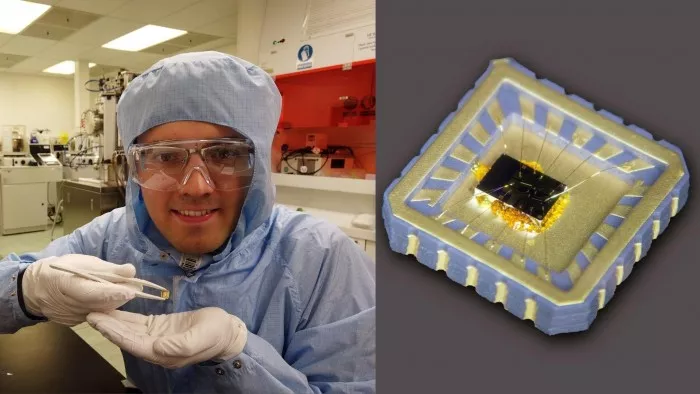Scientists have found a new effect in the two-dimensional conductive system, which is expected to improve the performance of terahertz detectors. A recent physical discovery in a two-dimensional conductive system makes it possible to develop a new type of terahertz detector. Terahertz frequency lies between microwave and infrared in the electromagnetic radiation spectrum, which can realize faster, safer and more effective imaging technology and higher speed wireless communication. The lack of effective practical equipment has hindered these developments, but this new breakthrough has brought us one step closer to these advanced technologies.
A team of scientists from Cavendish Laboratory, together with colleagues from the University of Augsburg (Germany) and the University of Lancaster, discovered a new physical effect when two-dimensional electronic systems are exposed to terahertz waves.
"So far, the fact that this effect can exist in a highly conductive two-dimensional electron gas at much lower frequencies has not been understood, but we have been able to prove this through experiments."- Wladislaw michailow
First, what is terahertz wave? "We use mobile phones that emit microwave radiation for communication and infrared cameras for night vision. Terahertz is an electromagnetic radiation type between microwave and infrared radiation," explained Professor David Ritchie, head of the semiconductor physics group at Cavendish Laboratory, Cambridge University, However, at present, the lack of this type of radiation source and detector will be cheap, efficient and easy to use, which hinders the wide use of terahertz technology.
Researchers from the semiconductor physics group, together with researchers from Pisa and Turin, Italy, demonstrated the operation of terahertz frequency lasers, namely quantum cascade lasers, for the first time in 2002. Since then, the group has continued to study terahertz physics and technology, and is currently researching and developing functional terahertz devices, including modulators formed from metamaterials and new detectors.

Wladislaw michailow shows the device in the clean room and the terahertz detector after manufacturing.
If the problem of lack of available equipment is solved, terahertz radiation can have many useful applications in safety, materials science, communication and medicine. For example, terahertz waves allow imaging of cancer tissue that cannot be seen by the naked eye. They can be used in a new generation of safe and fast airport scanners, making it possible to distinguish drugs from illicit drugs and explosives, and they can be used to achieve faster wireless communications beyond the state-of-the-art.
So what are the recent findings about? "We are developing a new type of terahertz detector," said Dr. wladislaw michailow, a junior researcher at Trinity College, Cambridge University. "But when measuring its performance, we found that the signal displayed by it is much stronger than it should be in theory. So we came up with a new explanation.".
Scientists say the explanation lies in the way light interacts with matter. At high frequencies, matter absorbs light in the form of a single particle, a photon. This explanation was first proposed by Einstein, which forms the basis of quantum mechanics and can explain the photoelectric effect. This quantized light excitation is a way for the camera in our smart phones to detect light; It is also the reason why solar cells generate electricity from light.
The well-known photoelectric effect includes incident photons from conductive materials - metals or semiconductors, and then release electrons. In the three-dimensional case, electrons can be expelled into a vacuum by photons in the ultraviolet or X-ray range, or released into a dielectric in the mid infrared to visible range. The novelty lies in the discovery of the quantum light excitation process in the terahertz range, which is similar to the photoelectric effect. "Wladislaw, the first author of the study, explained:" so far, the fact that this effect can exist at a lower frequency in a highly conductive two-dimensional electron gas has not been understood, "But we have been able to prove this through experiments. The quantitative theory of this effect was put forward by a colleague of the University of Augsburg in Germany. The international research team recently published their findings in the famous journal progress of science.
Researchers call this phenomenon "in-plane photoelectric effect" accordingly. In the corresponding papers, scientists described several benefits of terahertz detection using this effect. In particular, the magnitude of the "in-plane photoelectric effect" produced by the incident terahertz radiation is much higher than the expectation of other mechanisms known so far. Therefore, scientists predict that this effect will greatly improve the sensitivity of terahertz detector manufacturing. This brings us one step closer to making terahertz technology available in the real world.